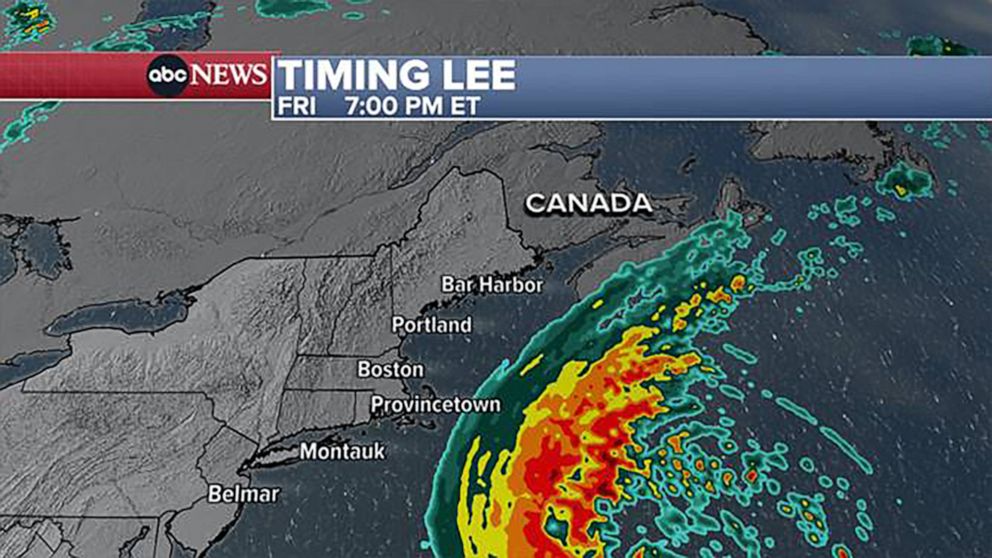In recent years, the term “post-tropical cyclone Lee” has become increasingly relevant as climate change continues to influence weather patterns globally. This article delves into the nature of post-tropical cyclones, with a specific focus on Cyclone Lee, offering insights into its impact, the science behind its transformation, and essential preparedness tips.
Key Takeaways

- Post-tropical cyclones, like Lee, can still pose significant threats despite losing tropical characteristics.
- Understanding the transformation process of cyclones is crucial for effective disaster preparedness.
- Communities must focus on recovery and rebuilding efforts post-cyclone to ensure long-term resilience.

What is a Post-Tropical Cyclone?

Post-tropical cyclones are weather systems that have transitioned from tropical storms or hurricanes. These systems lose their tropical characteristics but can still bring severe weather, including heavy rain, strong winds, and coastal flooding. The transformation often occurs when the cyclone moves over cooler waters or interacts with other weather systems.
The Science Behind Cyclone Lee’s Transition
Post-tropical cyclone Lee exemplifies the transformation process. Initially a powerful tropical cyclone, Lee encountered cooler ocean waters and increased wind shear, factors that contributed to its transition. Despite these changes, Lee retained significant energy, resulting in impactful weather conditions across affected areas.

Impacts of Post-Tropical Cyclone Lee
Cyclone Lee’s transition to a post-tropical state did not diminish its potential for destruction. The storm brought heavy rainfall, causing widespread flooding in low-lying areas. Coastal regions experienced significant storm surges, leading to property damage and erosion. Additionally, strong winds resulted in power outages and downed trees, complicating recovery efforts.
Regional Effects
The impacts of post-tropical cyclone Lee varied by region:
- Coastal Areas: Experienced the brunt of the storm surge and high winds, leading to extensive damage to infrastructure and homes.
- Inland Regions: Faced severe flooding due to prolonged rainfall, impacting agriculture and disrupting transportation networks.
- Islands: Smaller islands were particularly vulnerable, with limited resources for immediate recovery and rebuilding efforts.
Preparedness Tips for Post-Tropical Cyclones
Understanding the potential impacts of post-tropical cyclones like Lee is crucial for effective preparedness. Here are some essential tips:
- Stay Informed: Regularly monitor weather updates from reliable sources to stay informed about storm developments.
- Emergency Kits: Prepare emergency kits with essentials such as water, non-perishable food, batteries, and first-aid supplies.
- Evacuation Plans: Have a clear evacuation plan in place, especially if you live in a coastal or flood-prone area.
- Secure Property: Reinforce windows, doors, and roofs to minimize damage from high winds and flying debris.

Recovery and Rebuilding Post-Cyclone
After the immediate threat of a post-tropical cyclone like Lee has passed, communities face the challenge of recovery and rebuilding. This phase involves assessing damage, restoring essential services, and implementing long-term resilience measures.
Steps for Effective Recovery
To ensure a successful recovery, consider the following steps:

- Damage Assessment: Conduct thorough assessments to determine the extent of damage to infrastructure and homes.
- Community Support: Engage community members in recovery efforts, fostering a sense of solidarity and shared responsibility.
- Government Assistance: Utilize available government resources and programs designed to aid in disaster recovery.
- Long-Term Planning: Implement measures to enhance resilience against future storms, such as improved building codes and stormwater management systems.
The Importance of Climate Resilience
As climate change continues to drive more frequent and intense weather events, building climate resilience is crucial. This involves not only preparing for immediate impacts but also addressing underlying vulnerabilities that exacerbate the effects of storms like post-tropical cyclone Lee.
Strategies for Building Resilience
Communities can adopt several strategies to enhance climate resilience:
- Infrastructure Upgrades: Invest in resilient infrastructure that can withstand extreme weather conditions.
- Community Education: Educate the public about climate risks and the importance of preparedness and adaptation.
- Environmental Conservation: Protect natural barriers such as wetlands and mangroves that can mitigate storm impacts.
Post-tropical cyclone Lee serves as a stark reminder of the ongoing challenges posed by evolving weather patterns. By understanding the nature of these storms, preparing effectively, and focusing on recovery and resilience, communities can better navigate the complexities of post-tropical cyclones. As we continue to adapt to a changing climate, collective efforts in preparedness and resilience will be key to safeguarding lives and livelihoods.